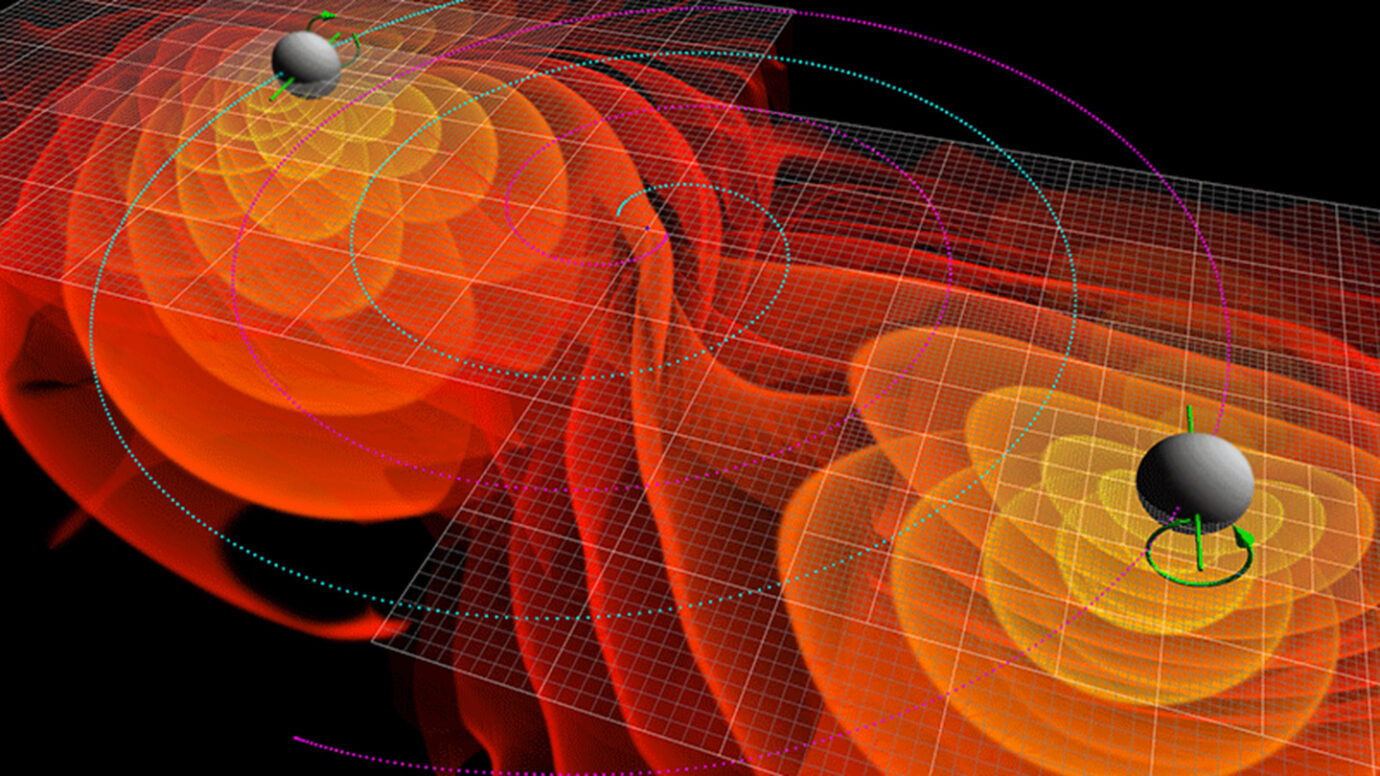The black holes found each other late in life before colliding
Signals buried deep in data from gravitational wave observatories imply a collision of two black holes that were clearly born in different places.
Almost all the spacetime ripples that experiments like the Laser Interferometer Gravitational-Wave Observatory, or LIGO, see come from collisions among black holes and neutron stars that are probably close family members (SN: 1/21/21). They were once pairs of stars born at the same time and in the same place, eventually collapsing to form orbiting black holes or neutron stars in old age.
Now, a newly noted marriage of black holes, found in existing data from U.S.–based LIGO and its sister observatory Virgo in Italy, seems to be of an unrelated pair. Evidence for this stems from how they were spinning as they merged into one, researchers report in a paper in press at Physical Review D.
Black holes that are born in the same place tend to have their spins aligned, like a pair of toy tops spinning on a table, as they orbit each other. But the pair in this case have no correlation between their respective spins and orbits, implying that they were born in different places.
“This is telling us we’ve finally found a pair of black holes that must come from the non-grow-old-and-die-together channel,” says Seth Olsen, a physicist at Princeton University.
Previous events that have turned up in gravitational wave observations show back holes merging that aren’t perfectly aligned, but most are close enough to strongly imply family connections. The new detection, which Olsen and colleagues found by sifting through data that the LIGO-Virgo collaboration released to the public, is different. One of the black holes is effectively spinning upside down.
That can’t easily happen unless the two black holes come from separate places. They probably met late in their stellar lives, unlike the black hole littermates that seem to make up the bulk of gravitational wave observations.
In addition to the merger between unrelated black holes, Olsen and his collaborators identified nine other black hole mergers that had slipped through the prior LIGO-Virgo studies (SN: 8/4/21).
“This is actually the nice thing about this type of analysis,” says LIGO scientific collaboration spokesperson Patrick Brady, a physicist at the University of Wisconsin–Milwaukee who was not affiliated with the new study. “We deliver the data in a format that can be used by other people and then [they] will have access to try out new techniques.”
To compile so many new signals in data that had already been gone over by other researchers, Olsen’s group lowered the analytical bar a little.
“Out of the 10 new ones,” Olsen says, “there are about three of them, statistically, that probably come from noise,” rather than being definitive black hole merger detections. Assuming that the merger of black holes strangers is not among the errant signals, it almost certainly tells a tale of black hole histories distinct from the others seen so far.
“It would be [extremely] unlikely for this to come from two black holes that have been together for their whole lifespan,” Olsen says. “This must have been a capture. That’s cool because we’re finally able to start probing that region of the [black hole] population.”
Brady notes that “we don’t understand the theory [of black hole mergers] well enough to be able to confidently predict all of these types of things.” But the recent study may point to new and interesting opportunities in gravitational wave astronomy. “Let’s follow this clue to see if it really is reflecting something rare,” he says. “Or if not, well, we’ll learn other things.”
- Karlston and flash13
-

 2
2



Recommended Comments
There are no comments to display.
Join the conversation
You can post now and register later. If you have an account, sign in now to post with your account.
Note: Your post will require moderator approval before it will be visible.